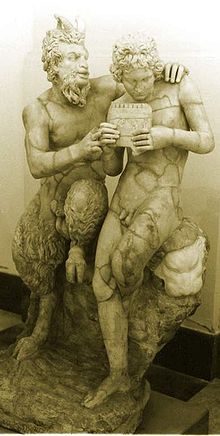I’ve been wrestling with this post for two days now—I suspect that I’m starting to overdose on Stephen King. But I’m in the final stretch now! This post will be less polished than usual, but I’m publishing it so I can press on past my mild case of writer’s block.
The story: “Children of the Corn,” collected in Night Shift. First published in 1977. Wikipedia entry here.
Spoiler-filled synopsis: A bickering couple driving through rural Nebraska comes across a seemingly abandoned town. They soon learn that it’s home to a blasphemous cult of children who have murdered the town’s adults and worship a demonic corn deity called He Who Walks Behind the Rows. If you can’t guess how it ends, you haven’t been keeping up with my short story write-ups.
My thoughts: This is it—the quintessential Stephen King short story. Once you’ve read this story, quite a few of his other stories will suddenly seem like pale retreads of “Children of the Corn.”
“Children of the Corn” follows the “strangers stumble across a creepy town with a dark secret” script closely, to good effect. It’s also packed with favorite Stephen King tropes: a bickering married couple, twisted fundamentalist Christianity, evil children, and creepy rural America. Burt and Vicky are somewhat less sympathetic than other married couples in King’s stories; they’re on the edge of divorce and are continually at each other’s throats. I’ve mentioned several times already that King loves depicting married relationships, and here as in other stories he spends time establishing personal dynamics even when the story doesn’t absolutely require it. Their bickering (over directions, over what to do when it’s clear they should be booking out of incredibly eerie Gatlin, Nebraska) actually seals their fate: Burt drags his feet in leaving town just to spite Vicky, and an argument about this causes them to separate (and move too far from their escape vehicle) at the worst possible time.
So what is the deal with eerie, abandoned Gatlin? Burt pieces the facts together while exploring a defaced Christian church. The backstory is delivered in a burst of exposition and is too complex for Burt to have plausibly figured it out with the limited clues at his disposal, but who cares? Years ago, the children of Gatlin, influenced by an evil supernatural entity that acts like a cross between a wrathful Old Testament tyrant and a bloodthirsty pagan fertility god, murdered everyone over the age of 19. They live in accordance with the corn god’s hellfire-and-brimstone edicts, sacrificing anyone who “ages out” of the cult.
Vicky and Burt are trapped by the cultist-kids; Vicky is killed, but Burt escapes into the endless rows of corn outside the village. For a while, it looks like he might make it, but the cornfields are the domain of He Who Walks Behind the Rows, and when Burt stumbles onto its “holy ground,” it all ends as you would expect.
The story ends with a scene in which the cult’s seven-year-old “prophet” communicates their god’s anger at their failure to kill Burt without its direct intervention; the punishment is the lowering of the “sacrifice age” from 19 to 18. In the final sentences, it’s suggested that some of the child cultists may be starting to question their situation.
There’s a lot to unpack in this story, and I hate to leave you with just this synopsis—but I need to post this so I can press forward. This is one of the strongest stories from Night Shift that I’ve read so far, and although it touches on a lot of uncomfortable themes, it’s required reading for anyone who wants to get a feel for King’s early storytelling style. (You can safely skip the terrible, yet strangely well-known, movie based on this story.)
Next up: “Crouch End,” from Nightmares and Dreamscapes.


 Spoiler-filled synopsis: In the darkest days of the Cold War, a hyper-intelligent scientist discovers a chemical that removes all violent instincts from anyone who ingests it. He manages to spread the chemical across the globe, bringing about world peace… but unwittingly also dooming humanity, because an unanticipated side effect of the drug is the Alzheimer’s-like mental degeneration of everyone exposed to it.
Spoiler-filled synopsis: In the darkest days of the Cold War, a hyper-intelligent scientist discovers a chemical that removes all violent instincts from anyone who ingests it. He manages to spread the chemical across the globe, bringing about world peace… but unwittingly also dooming humanity, because an unanticipated side effect of the drug is the Alzheimer’s-like mental degeneration of everyone exposed to it.
 Spoiler-filled synopsis: A suburban man hires somebody to mow his lawn. Unfortunately, this particular lawnmower man is a
Spoiler-filled synopsis: A suburban man hires somebody to mow his lawn. Unfortunately, this particular lawnmower man is a